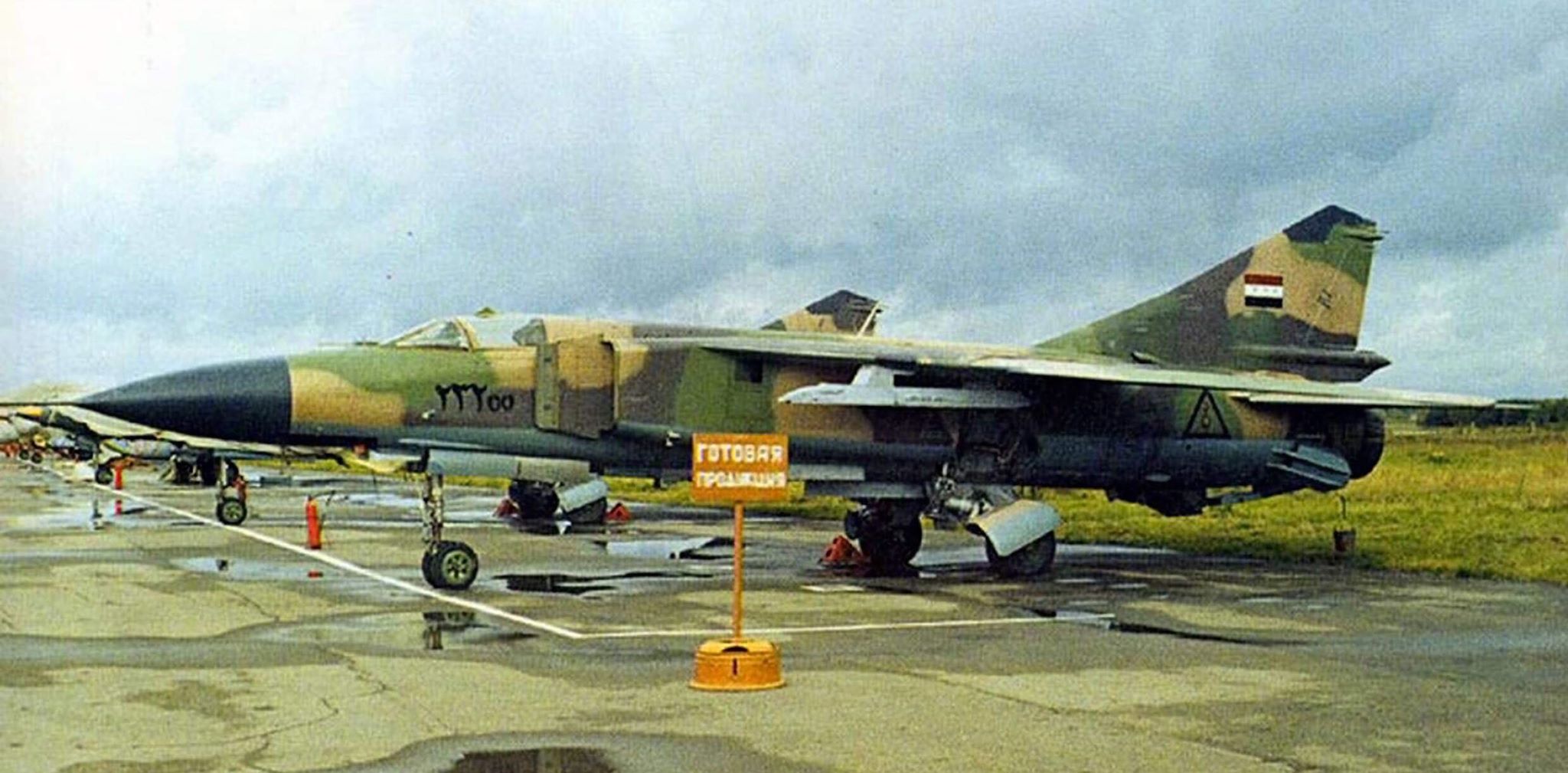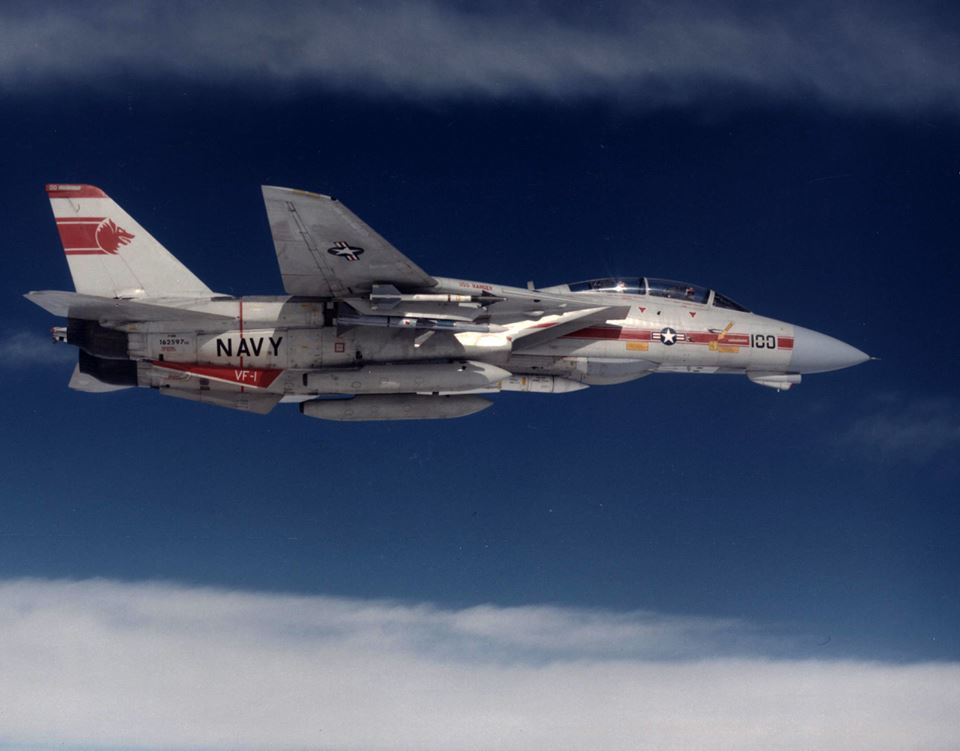No doubt, ROEs favoured the USAF F-15C crews. However, this did not mean that the US Navy F-14s did not fly fighter sweeps, as widely claimed: they did
While the US Navy already favoured the development of fast interceptors armed with radar guided missiles capable of engaging beyond visual range (BVR) during the second half of the 1950s, resulting in the development of the F-4 Phantom II, experience from local conflicts of the 1960s showed that deploying such weapons could easily result in so-called ‘blue-on-blue’ incidents: cases where friendly forces were misidentified as enemy, and taken under fire. Indeed, both the as Phantoms of the US Navy and of the USAF had several times opened fire on allied fighter jets, sometimes resulting in painful losses. As explained by Tom Cooper in his book In the Claws of the Tomcat: US Navy F-14 Tomcats in Air Combat against Iran and Iraq, 1987-2000, the consequence was a set of rules of engagement (ROEs) dictating that nobody could open fire without visually identifying the target: with this, the F-4 quickly lost its primary advantage vis-à-vis MiGs operated by the North Vietnamese air force. Some of the BVR capability was recovered only during the last years of that conflict through the development and installation of systems like the AN/APX-80 Combat Three enemy-IFF-interrogator. This was capable of `triggering’ and ‘reading’ the (non-decrypted) signals from the Soviet-made SRO-2/Khrom IFF-transponder installed into North Vietnamese MiGs: it enabled their positive identification from dozens of kilometres away, and thus the crews of USAF F-4Ds equipped with it were able to use their AIM-7 Sparrows from beyond visual range. Up to two dozen MiG-kills were scored with help of the ‘Tree’ in the 1971-1972 period, before the North Vietnamese figured out what the Americans were doing, and limited the use of the SRO-2.
While derivatives of the APX-80 subsequently found widespread use in the USAF, and were even exported to Iran and Israel, due to the acquisition of the expensive F-14, the Navy was so starved of funding that it could not afford the acquisition of similar equipment for its Tomcats. Correspondingly, they received only the AN/APX-76 friendly IFF-interrogator. It was rather on the insistence of F-14 crews that a cheaper solution was found in the form of the AN/AXX-1 Television Camera Set (TCS): this was a camera equipped with a telescopic lens capable of providing a reasonable clear image – and thus visual identification — of big aircraft tracked by the AWG-9 out to a range of about 80km (43nm). The TCS entered service in the early 1980s but was still few in numbers even during engagements with Libya in 1986.
Meanwhile, it was foremost the invention of micro and information technologies that resulted in the emergence of the non-cooperative target recognition (NCTR). Decades previously it was known that radar returns contained more information than the available technology could extract. The solid-state processors enabled this to be rectified and the USAF took care to install the NCTR-software on computers supporting the AN/APG-63 radar of the F-15C, in the form of the MSIP-II upgrade in the early 1980s. USN installed similar software into the AN/APG-65 radar of the F/A-18 Hornet fighter-bomber in the early 1980s, and intended follow-up by doing the same with the F-14D, however, none of these were in operational service as of 1990-1991. Moreover, even the NCTR installed into the F-15C was still far from working perfectly. Correspondingly, when planning for the war against Iraq, Combined Air Operations Centre (CAOC) was left without choice but to impose very strict ROEs. These dictated:

- that only crews that had two forms of electronic identification on hoard were granted autonomous and independent permission to open fire: they did not require talking to anybody before shooting
- if there was only one form of electronic identification available, the crew had to corelate with, and receive permission from, E-2 or E-3 controllers before they could open fire.
No doubt, such ROEs favoured the USAF F-15C crews, because thanks to the installation of the NCTR they could act quicker.
However, this did not mean that the F-14s did not fly fighter sweeps, as widely claimed: they did.
Finally, a few words ought to be said about the US Navy’s fighter doctrine of 1991. Reading this article might create the impression of this being ‘too conservative’. However, one should keep in mind that there were plenty of excellent reasons why. Primary amongst these was that the doctrine of the US Navy was that of fighting a war against the USSR by striking its major bases on the Kola Peninsula and in the Far East. Because no allies could operate in such a high-threat areas, operations there were to be run by the Navy alone. Moreover, the available intelligence indicated that, despite all its quirks and weak spots, the F-14 provided the US Navy with such vast technological superiority in comparison to for whatever was likely to come its way at the time, that the type was likely to decide the mass of its engagements through deterrent and the intimidation alone, and would do so during operations over the sea, without crossing the enemy coast. Although this was never written in the Navy’s original requirement for the AWG-9, AIM-54, or the F-14, this superiority was of such quality that in any war the type was near-certain to score far more ‘mission kills’ through forcing its opponent away by its sheer presence, or even grounding them, than to actually shoot down its opponents. In other words — and as proven by the operations of Iranian Tomcats during the war with Iraq — the Tomcat did not require scoring 50, 100, 150 or more ‘kills’ to become successful.

Unsurprisingly, the Topgun courses of the late 1980s taught not only F-14 crews, but also squadron commanders (COs) and deputy commanders (XOs), airwing staff and even CVBG commanders, that the job of Tomcats during offensive operations was to stay with the strike package — with fighter-bombers, electronic warfare and other aircraft they were supposed to protect — to ‘delay and disrupt’, instead of ‘chasing MiGs’. This even more so because in combat there was always the chance of the enemy deploying a demonstrative group of aircraft to decoy F-14s away, and then hitting the strike package they were supposed to protect. The intensive and thorough training of US Navy Tomcat crews resulted in this idea sinking into everybody to a degree where it greatly influenced their planning for and conduct of operations against Iraq in 1991. As a result in thousands of sorties flown by F-14s during 42 days of the Second Persian Gulf War, not one F-14 crew decided to abandon the formation it was tasked with protecting, regardless what was going on around it, or what kind of threat was it facing.
In the Claws of the Tomcat: US Navy F-14 Tomcats in Air Combat against Iran and Iraq, 1987-2000 is published by Helion & Company and is available to order here.
Photo by U.S. Navy, U.S. Air Force and Tom Cooper

